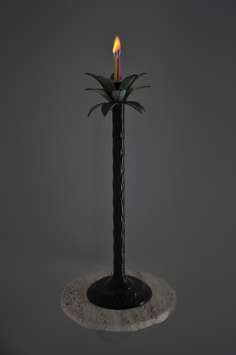
Trevor Yeung’s poignant exhibition all about love and loss
The Hong Kong-based artist explores love and loss, appearance and reality, in this beautifully arranged show, where sentimentality and sadness collide with kitsch and pure happiness

The perils of exhibiting a delicate sculptural installation during a busy Wong Chuk Hang gallery open day were revealed when Trevor Yeung’s appropriately named Wiped Off The Face of The Earth (2016) was knocked by a child and crashed to the floor. Luckily, it was the display case not the artwork that was damaged.
But the group of three separate pieces – Born with Two Hearts (2016) and Three to Tango (2016) are the others – had great(er) poignancy in this state, as the artworks describe a complex three-person triangular relationship. Yeung had collected seashells and manipulated them into new and suggestive sculptural forms; the damaged work was entwined Siliquaria armata, or sea snails, constructed to hug each other – and this species of sea snail is quite elongated, so it is a long, passionate embrace.


Giving the exhibition an introduction, The Saddest Sunset (2016) trilogy of photographs features three locations around the world and recalls a past love affair. The photographs, however, do not capture the precise sunset moment, but the time preceding and following it. Depicting these fading landscapes, Yeung further exposes his developed photographs to destructive ultraviolet light, to give greater conceptual weight to his idea that “memories of the moment captured are lost like the colours in a faded photograph”.


Often used in his work and of continuing fascination for Yeung is the intricate geometry of the cactus. Beautiful to admire, the cactus also has another physical element: spikes. Yeung’s Cacti (2016) series is three plants in separate pots set up on plinths. These constructions, however, are made from the spiky skin of the blowfish, known for its deadly toxicity, with the skin painted green to resemble a cactus. Yeung questions “the nature of objects and the meaning of appearances” while “satirising people’s selective understanding”. In the context of this exhibition, too often others make assumptions about our personal lives, and situations may not be as obvious as they appear. Overseeing the installation is a photograph of a handsome security guard, with only guardian-angel intentions. But who knows?
A bit too schmaltzy is Sunset Light (2016). Visitors – preferably a couple – are invited to sit on the provided bench to watch a pair of small conjoined lit candles. The candles flicker down, a “fleeting radiance”, in the half-light. Nearby is the imagined outcome, Last Summer Sunset (2016), a palm-tree-shaped candle stand covered in thick layers of gooey congealed candle wax described as “the afterglow of the sunset”.

Alternatively, our best intentions and struggles for love can merely appear as fallen bicycles seen in a bike-parking spot, a metaphor photographed on the street by Yeung as Sleeping Bikes (2016).

Trevor Yeung’s “The Sunset of Last Summer” is at Blindspot Gallery, 15/F, Po Chai Industrial Building, 28 Wong Chuk Hang Road, until November 19.